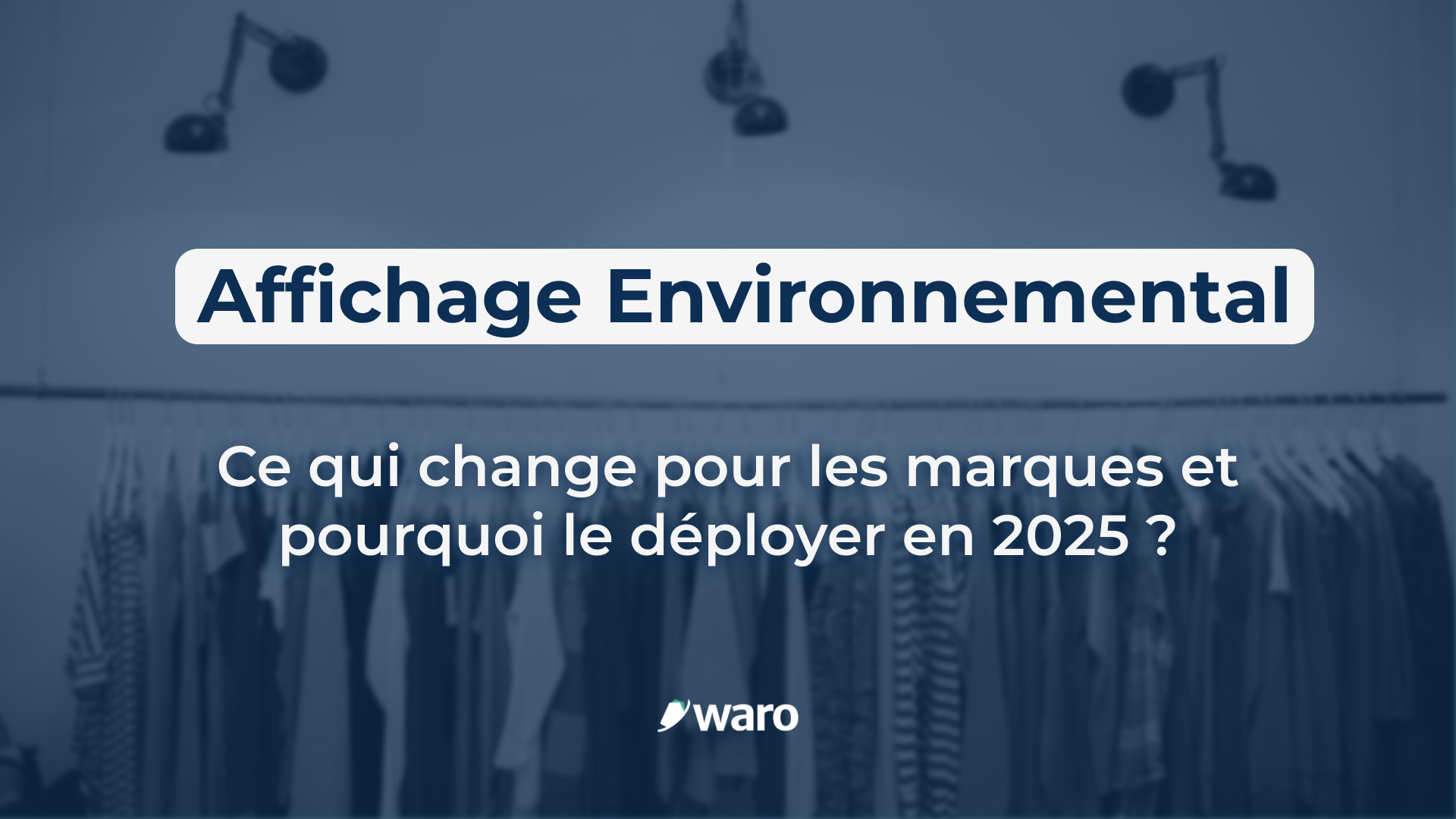
Environmental labelling of textile products is set to become an integral part of the French regulatory landscape. Validated by the European Commission in May 2025, the decree governing the environmental cost of clothing provides a robust framework for assessing and communicating the environmental impact of products.
In this article, we take a look at the major steps ahead, the strategic implications for brands, and the levers to activate from 2025 to effectively anticipate this regulatory turning point.
The regulatory framework for textile environmental labelling is part of an underlying dynamic, initiated in 2019 with the Convention Citoyenne pour le Climat, then enshrined in the 2021 Climate and Resilience Act. The aim: to provide consumers with a reliable indicator, based on life cycle analysis (LCA), to help them make informed choices.
After several years of experimentation, the decree on environmental textile labelling enters its operational phase.
The ability of brands to measure and control the environmental impact of their products is becoming a strategic issue for several reasons:
Environmental labelling is not an isolated initiative: it is enshrined in the French Climate Law. The decree formalizes a single methodology, which becomes the benchmark for measuring and communicating the environmental impact of clothing.
If a brand wants to communicate the environmental performance of its products, it must now use environmental cost.
In a context of increasing greenwashing, only environmental claims based on validated scientific evidence will be tolerated. Measuring the real impact of your products allows you to :
From 2026, third parties (applications, associations, competitors) will be able to publish environmental scores for you, based on public data or by default.
These default values are generally penalizing: not taking action means letting others define your footprint.
Consumer expectations are clear:
By communicating from 2025, you benefit from :
There are three main stages in the roll-out of environmental labelling.
The first step is to collect the right data to be able to measure the environmental impact of your products.
Mandatory data includes: product name, category, date marketed, product weight, material composition, AGEC stages (assembly, dyeing, knitting, etc.), and if necessary, data on printing, washing and transport.
Then there's the optional data, which can be used to refine the score: range width, product price, presence of a repair service, air freight rate, etc. The more you can collect this data, the more precise the score. The more data you can collect, the more accurate the score. In their absence, default values - often penalizing - are applied.
And finally, there are more advanced data that enable us to go even further (eco-design): rate of unsold goods, rate of losses during packaging, electricity mix, type of finishing, energy consumption, data on packaging, etc.
Prior to any communication, scores must be posted on an official portal (accessible as soon as the decree is published).
This portal aims to :
Partner platforms (such as Waro) can directly deposit the environmental costs of your products.
Once the score has been declared, you can communicate it. There is no obligation to do so, unless you are already communicating another environmental indicator (for example, the number of kilos of CO2, or a score derived from another methodology). In this case, you are obliged to display the environmental cost as well, with the same visibility.
Once the score has been entered on the declaration portal, you can communicate it :

